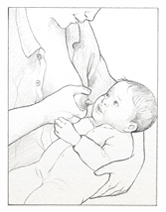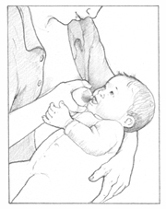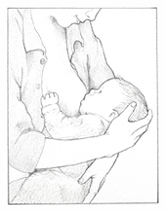Find a Provider
From well-child visits to specialized treatment of complex illnesses and injuries, we offer comprehensive care from an exceptional team of doctors, nurses and allied professionals.
- Parents Home
- Para Padres
- A to Z Dictionary
- Allergy Center
- Asthma
- Cancer
- Diabetes
- Diseases & Conditions
- Doctors & Hospitals
- Emotions & Behavior
- First Aid & Safety
- Flu (Influenza)
- Food Allergies
- General Health
- Growth & Development
- Heart Health & Conditions
- Homework Help Center
- Infections
- Newborn Care
- Nutrition & Fitness
- Play & Learn
- Pregnancy Center
- Preventing Premature Birth
- Q&A
- School & Family Life
- Sports Medicine
- Teens Home
- Para Adolescentes
- Asthma
- Be Your Best Self
- Body & Skin Care
- Cancer
- Diabetes
- Diseases & Conditions
- Drugs & Alcohol
- Flu (Influenza)
- Homework Help
- Infections
- Managing Your Weight
- Medical Care 101
- Mental Health
- Nutrition & Fitness
- Q&A
- Safety & First Aid
- School, Jobs, & Friends
- Sexual Health
- Sports Medicine
- Stress & Coping
Breastfeeding FAQs: Getting Your Baby to Latch
Breastfeeding is natural, but it takes practice to get it right. Here's what you need to know about getting a good latch, making sure your baby is drinking, ending a nursing session, and more.

How to Breastfeed Your Baby
Learn the basics of breastfeeding from understanding signs of hunger to getting a good latch to knowing when to ask for help.
How Do I Get My Baby to Latch Correctly?
Find a quiet spot to sit, and support yourself with pillows, a footstool, or whatever you need to feel comfortable. Choose a nursing position that feels good. When you and your baby are ready, follow these steps:
Make a "nipple sandwich." Hold your breast with your hand, and compress it to make a "nipple sandwich." An easy way to remember how to hold your hand: Keep your thumb by your baby's nose and your fingers by the chin. (The thumb and fingers should be back far enough so that your baby has enough of the nipple and areola — the darker circle of skin around the nipple — to latch onto.) Compressing your breast this way lets your baby get a deep latch. Your baby's head should lean back slightly, so their chin is touching your breast.

Get your baby to open wide. Touch or rub your nipple on the skin between your baby's nose and lips. When this happens, your baby should open wide (like a yawn) with the tongue down.

Bring your baby to the breast. When your baby's mouth is open wide, quickly bring your baby to your breast (not your breast to your baby). Your baby should take as much of the areola into the mouth as possible. Your baby's nose should almost touch your breast (not press against it) and their lips should be turned out ("flanged").
When your baby is properly latched on, you may have a few moments of discomfort at first. After that, it should feel like a tug when your baby is sucking.

To make sure you're doing it right, it helps to be observed by someone who knows a lot about breastfeeding, like a lactation consultant.
What Is Let-Down?
The let-down reflex, or milk-ejection reflex, is a pins-and-needles feeling or tingling you may feel in your breasts just after your baby starts to suck. Milk may seep from the other breast.
The let-down reflex happens when your baby's sucking (or a breast pump pumping) triggers nerves in the nipple. The nerves send a message to your brain telling it to release milk. The brain releases a hormone called oxytocin that causes tiny muscles in the breast to tighten and squeeze the milk out, or "let it down."
Oxytocin also can make you feel cramps in your uterus when your milk lets down. This is helpful in getting your uterus back to its original size.
Let-down also can happen if a feeding is overdue or before you start nursing (you may also have let-down from simply seeing your baby or hearing a baby cry). Or it can happen after your baby is latched on and has sucked a few times. Some women have many let-downs during a single feeding.
Some women never have a feeling of let-down, which is OK too. Even if you don't feel it, you should still see milk coming from your nipple and hear and see your baby swallowing.
How Can I Tell if My Baby Is Drinking?
You can tell that your baby is drinking by seeing movement along the lower jaw or in your baby's ear and temple.
At the beginning of a feed, babies tend to suck quickly. Then, during let-down, you may hear your baby gulping. This may sound like little clicks.
Toward the end of a feed, babies slow down. Your breasts may feel softer and you will notice that your baby's hands and shoulders are more relaxed.
Will My Baby Release the Breast When Finished?
Most babies will release the breast on their own. If your baby doesn't, and the sucks now seem limited to the front of the mouth, break the suction. Do this by slipping your finger in the side of your baby's mouth (between the gums) and turn your finger a quarter turn to break the seal.
Try to burp your baby and then switch to the other breast.
How Can I Tell if My Baby Is Latched on Wrong?
If your baby latches on wrong, it will probably be uncomfortable to breastfeed. Some moms say it's painful or feels like a pinch as their babies nurse.
Babies who latch on wrong tend to fall asleep often at the breast and may not seem satisfied after a feed if they aren't getting enough milk.
If you think your baby is latched on wrong, break the suction. Then, reposition your baby onto your breast to include the nipple and areola. If you still feel pain even after repositioning, talk to your doctor or lactation consultant to make sure your baby is latched well (or that something else isn't going on).
Always call your doctor if you can't nurse without pain, or if your baby:
- keeps falling asleep at the breast
- is nursing but doesn't seem satisfied when feedings are over
- does not gain weight as expected, or does not produce as many wet and soiled diapers as usual (about 6 wet and 4 poopy diapers per day at first)

© 1995- The Nemours Foundation. KidsHealth® is a registered trademark of The Nemours Foundation. All rights reserved.
Images sourced by The Nemours Foundation and Getty Images.


